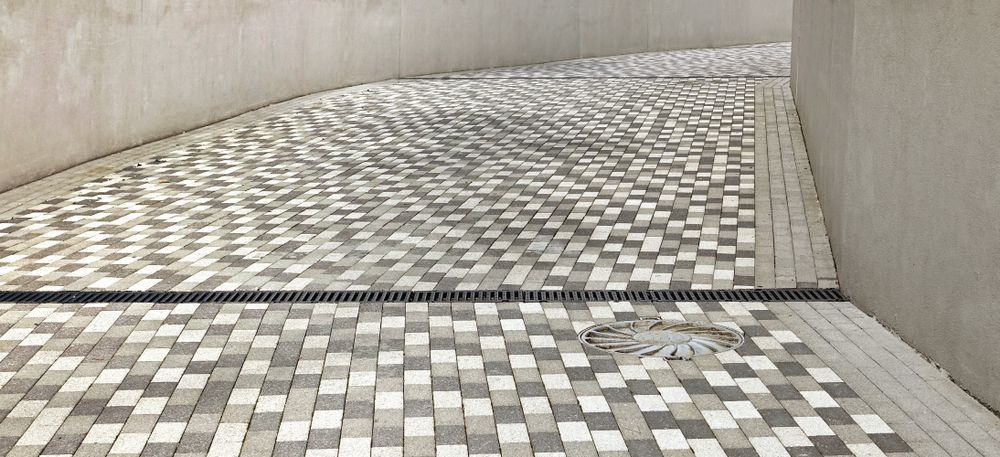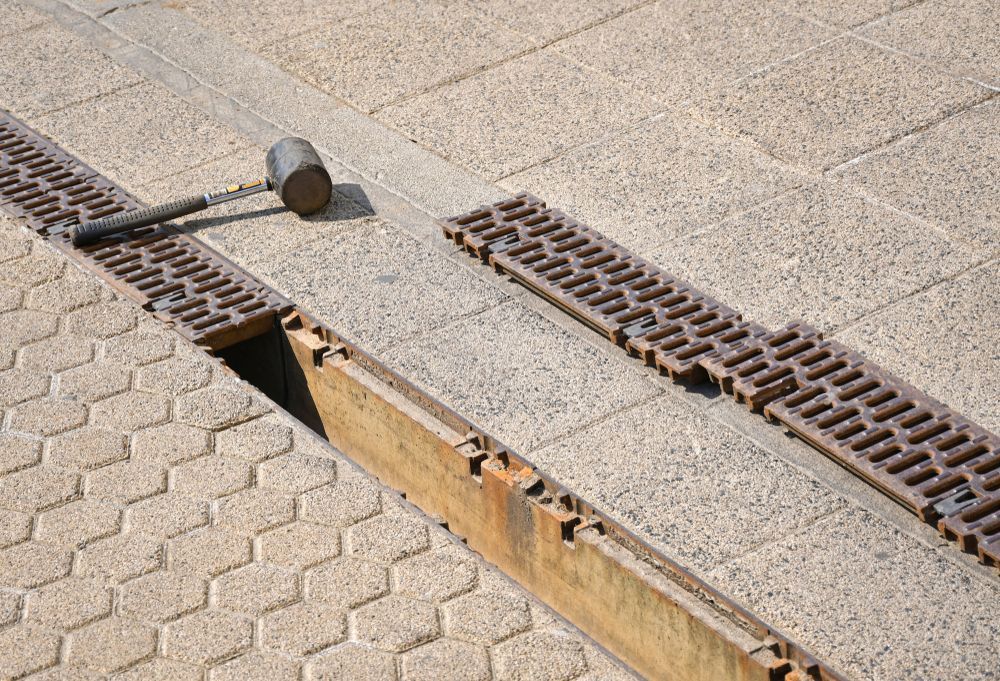A guide to channel drains
Like many non-standard forms of drainage system, channel drains – sometimes known as ACO drains – can be extremely useful in the right circumstances, providing a uniquely effective way of removing wastewater from car parks and hardstanding areas, as well as other paved or concrete-covered surfaces. However, their design poses its own maintenance challenges, meaning cleaning must be handled in a specific way.
As such, those responsible for properties that utilise the many different types of channel drain will need to be aware of how they work and the factors that can result in them becoming clogged, as well as the methods used to clean them effectively. By doing so, property owners can ensure their channel drains remain in good working order for as long as possible.
What are channel drains, and how do they work?
 Channel drains are a specific type of floor-based drain, consisting of a thin channel and a removable grating system placed over the top. This type of drain is often referred to as an ACO drain, after the most common brand name.
Channel drains are a specific type of floor-based drain, consisting of a thin channel and a removable grating system placed over the top. This type of drain is often referred to as an ACO drain, after the most common brand name.
These types of drain are commonly seen running along paved, tarmac and concrete-covered areas, which would otherwise be impermeable and prone to flooding. Channel drains are relatively easy to install, with no complicated layouts and couplers needed, and can be designed to aesthetically complement the surrounding paved or tarmacked area.
Channel drains offer a number of benefits compared to alternative methods of drainage. Rather than installing a series of point drains across the area, which often results in overflows and ponding, channel drains can provide a higher water-carrying capacity and can help to prevent flooding on your property, even under heavy rain conditions.
Other names given to specific channel drain variants include slot drains, linear drains and trench drains, although each of these systems operate on similar principles.
Where are channel drains most often used?
Channel drains are most often seen on commercial premises with large paved or tiled areas, though they are sometimes also used in domestic properties.
Common locations for channel drains include:
- Car parks
- Driveways and pathways
- Swimming pools and sports areas
- Patios and conservatories
- Gardens that include water features
- Petrol station forecourts
- Paved public spaces
In all of these instances, channel drains are designed to help funnel away excess water run-off from heavy rainfall or other spillages, while remaining aesthetically unobtrusive. Their protective grating also needs to be robust and sturdy enough to withstand the impact of the pedestrian and road traffic that often passes over them, especially in public spaces.
These surface water drains are frequently connected to interceptor tanks, which collect and contain contaminants, allowing the remaining wastewater to be channeled safely into the main sewer system.
What size channel drain do I need?
Choosing the right type of channel drain means getting an accurate assessment of the expected flow of drainage water on your premises, and then picking a drain with sufficient depth to handle this level of flow.
This means looking at how exposed the location in question is to the elements, and examining whether any water that falls in that area has anywhere else to drain towards. If the area in question is near to a building that also drips water from its roof in rainy conditions – as is often the case with car parks – then this needs to be taken into account.
Because channel drains and grates are floor-based, it is also important to choose products that will withstand an expected loading weight – for example, a channel drain that is being placed on an airport runway or a car park for heavy goods vehicles would need to be much stronger and more heavy-duty than one intended for a domestic patio.
What problems can arise with channel drains?
 Over time, channel drains can become clogged and blocked with soil, silt, leaves and other debris, as a consequence of their open design. This can gradually reduce the effectiveness of the drainage, meaning the area will be more prone to overflows and flooding unless they are regularly cleaned.
Over time, channel drains can become clogged and blocked with soil, silt, leaves and other debris, as a consequence of their open design. This can gradually reduce the effectiveness of the drainage, meaning the area will be more prone to overflows and flooding unless they are regularly cleaned.
Additionally, the protective grating can become damaged or warped due to heavy impacts or general wear and tear. This not only exposes the drain to the elements and increases the risk of foreign objects entering the system, but also creates a potential trip risk for pedestrians and a driving hazard for passing vehicles.
Given that channel drains are often located at public-facing commercial sites, this creates a significant business impetus to ensure they are being properly maintained.
How to clean and maintain channel drains
Channel drains are designed to be relatively straightforward to maintain, with grates that can be easily removed with keys, bolts or locking systems.
By carefully removing the relevant grate, it is often possible to remove any built-up debris or silt by hand or by flushing it out with water. However, if the blockage is more stubborn, or the drain itself has become damaged, then it may be necessary to call in a professional drainage company to assess and repair the defect before it causes further problems.
If you want to find out more information about cleaning and repairing problems with your channel drains, call Lanes for Drains on 0333 256 3088, or check out our full range of commercial and domestic drainage services.








